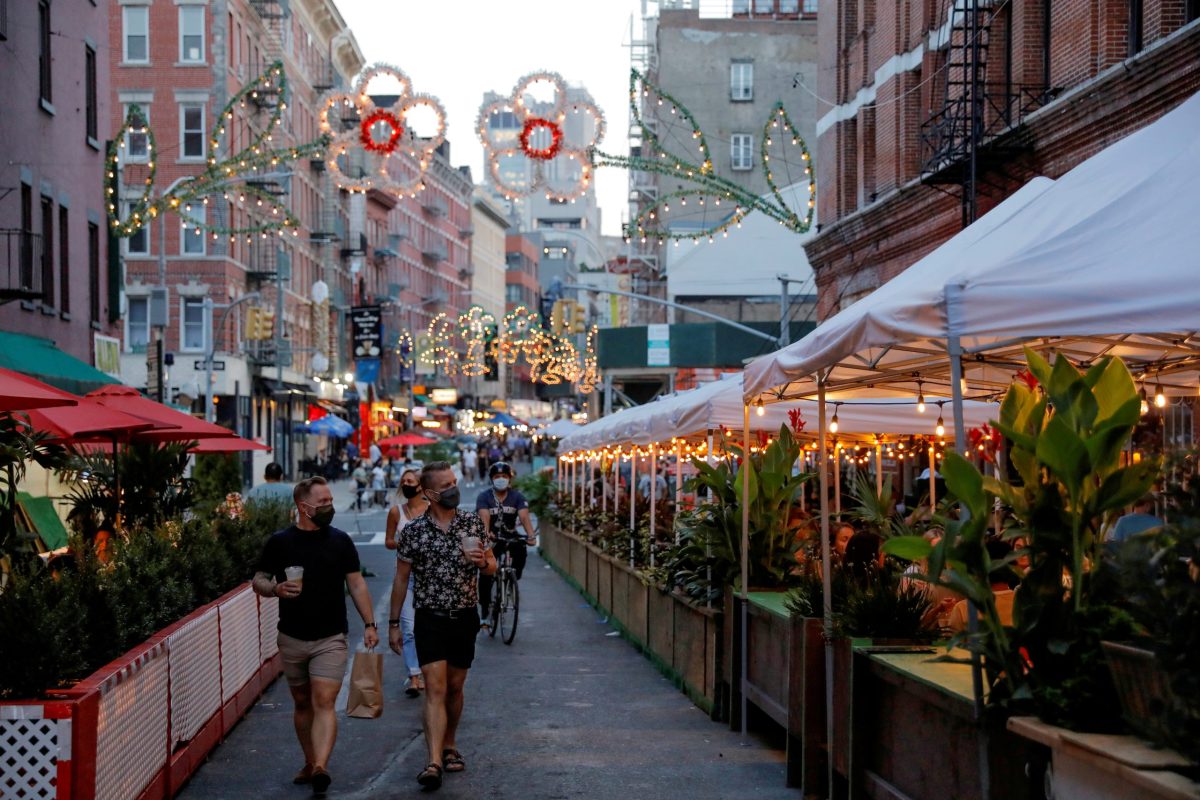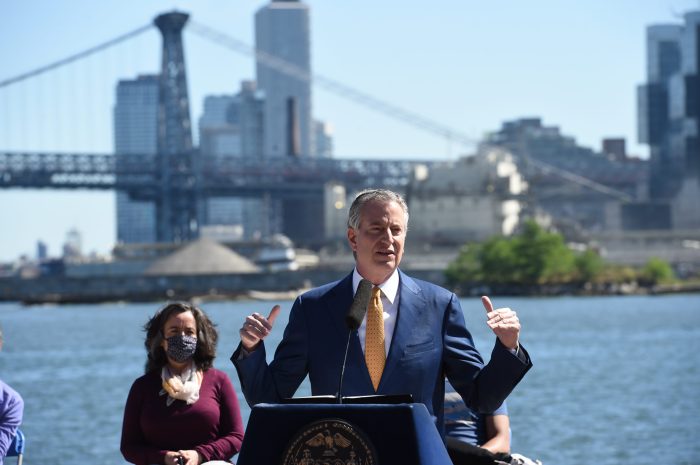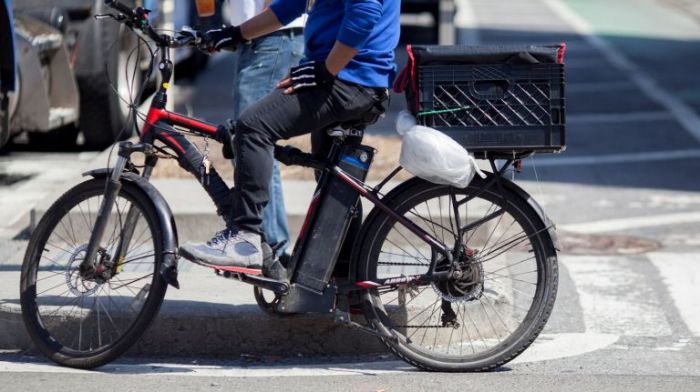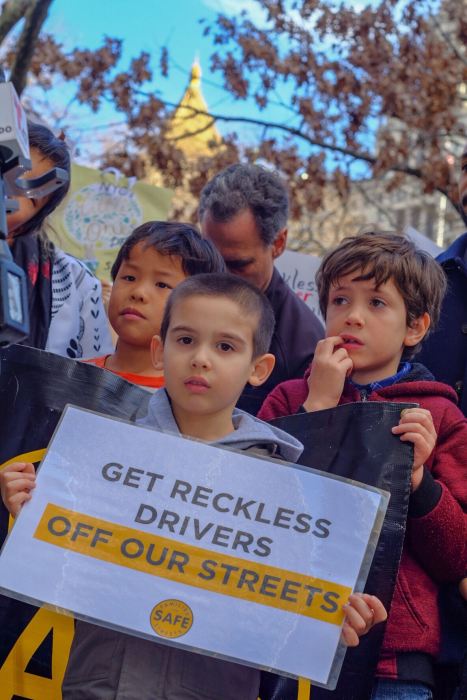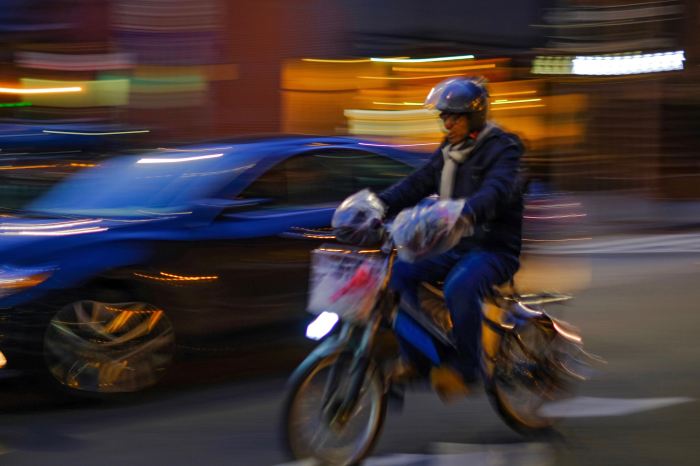An open letter to Mayor Bill de Blasio from the Open Streets Coalition is calling for greater improvements to the popular program that will connect them to transit hubs, install amenities for communities in the closed roadways and impose traffic calming measures, especially around outdoor seating for restaurants.
Transportation Alternatives, who leads the coalition of 63 community groups, is asking the mayor to expand the Open Streets program to communities in Staten Island and bring back corridors that have closed over the winter, while also lowering the speed limit in and around these spaces to five miles per hour.
“Open Streets allowed us to rethink how we use our streets, not just as space for transportation and storage of vehicles, but as space to meet our neighbors and stroll, socialize, dance, and relax safely,” the letter stated. “Prioritization for motor vehicles in our public space has resulted in thousands of senseless deaths and injuries caused by traffic violence, and respiratory illness caused by carbon pollution.”
Open Streets, a now-permanent program launched by the de Blasio administration to facilitate social distancing, has become popular in communities like Jackson Heights where 39th Avenue made up for a lack of parkland or in Lower Manhattan where it gave business safe space to operate in the pandemic.
“Open Streets have transformed our city’s urban landscape for the better, and we’re proud to make them permanent,” mayoral spokesman Mitch Schwartz said. “Building a recovery for all of us means putting equity and inclusion first. We’ll do everything we can to ensure communities have the resources they need to support the Open Streets they deserve.”
Earlier in March, Transportation Alternatives called on the city to set aside 25% of the roadway for cyclists and pedestrians, effectively creating up to 1,000 miles of Open Streets by 2025. At the time, the mayor said he had not seen the proposal himself, but supported the expansion of the program in general.
“While New York City is home to the biggest Open Street program in the nation, there are still neighborhoods that do not have access to this valuable program,” the Open Streets Coalition continued. “Communities such as the South Bronx and the North Shore of Staten Island still lack corridor-wide Open Streets. Even more, some Open Streets that were open in 2020 have since been closed. While some have received confirmation that they will return this spring, the fate of others is uncertain.”
The full recommendations in the letter are as follows:
- After assessment by the New York City Department of Transportation, determine which Open Streets can be shifted to 24/7 full-time operation;
- Codify into law the reduction of the speed limit on Open Streets to five miles per hour;
- Dedicate resources to volunteer groups that manage open streets, with an emphasis on lower-income communities, as volunteer-led Open Streets are unsustainable and inequitable;
- Connect Open Streets into a useful transportation network, bringing residents to retail corridors, transportation hubs, and open park space;
- Provide amenities, such as signage, benches, chairs, planters, and improved barriers, to provide for a safer and more inviting experience;
- Implement permanent street safety measures and provide more sophisticated barriers to prevent through-traffic on Open Streets;
- Limit and optimize commercial vehicle use, such as encouraging freight and for-hire vehicles to make pick-ups and drops on side streets, and creating loading zones to discourage double parking;
- Provide daily programming to encourage Open Streets usage by the local community, including exercise classes, educational programming, arts and cultural performances, and more.
- Improve traffic calming measures on Open Streets: Restaurants corridors;
- Allow businesses in the Open Storefronts program to utilize the roadway on non-Open Streets.



